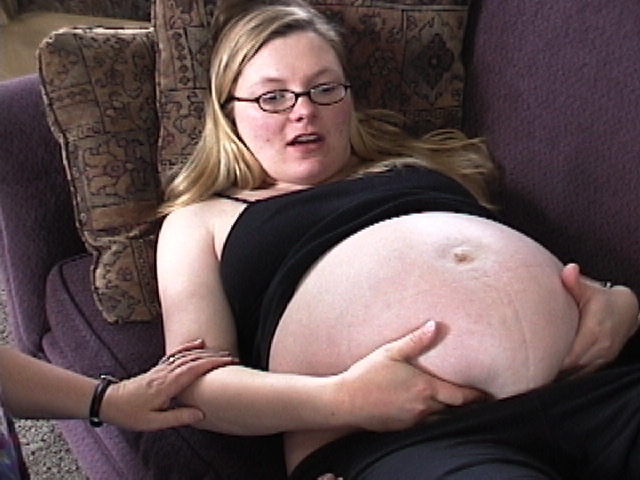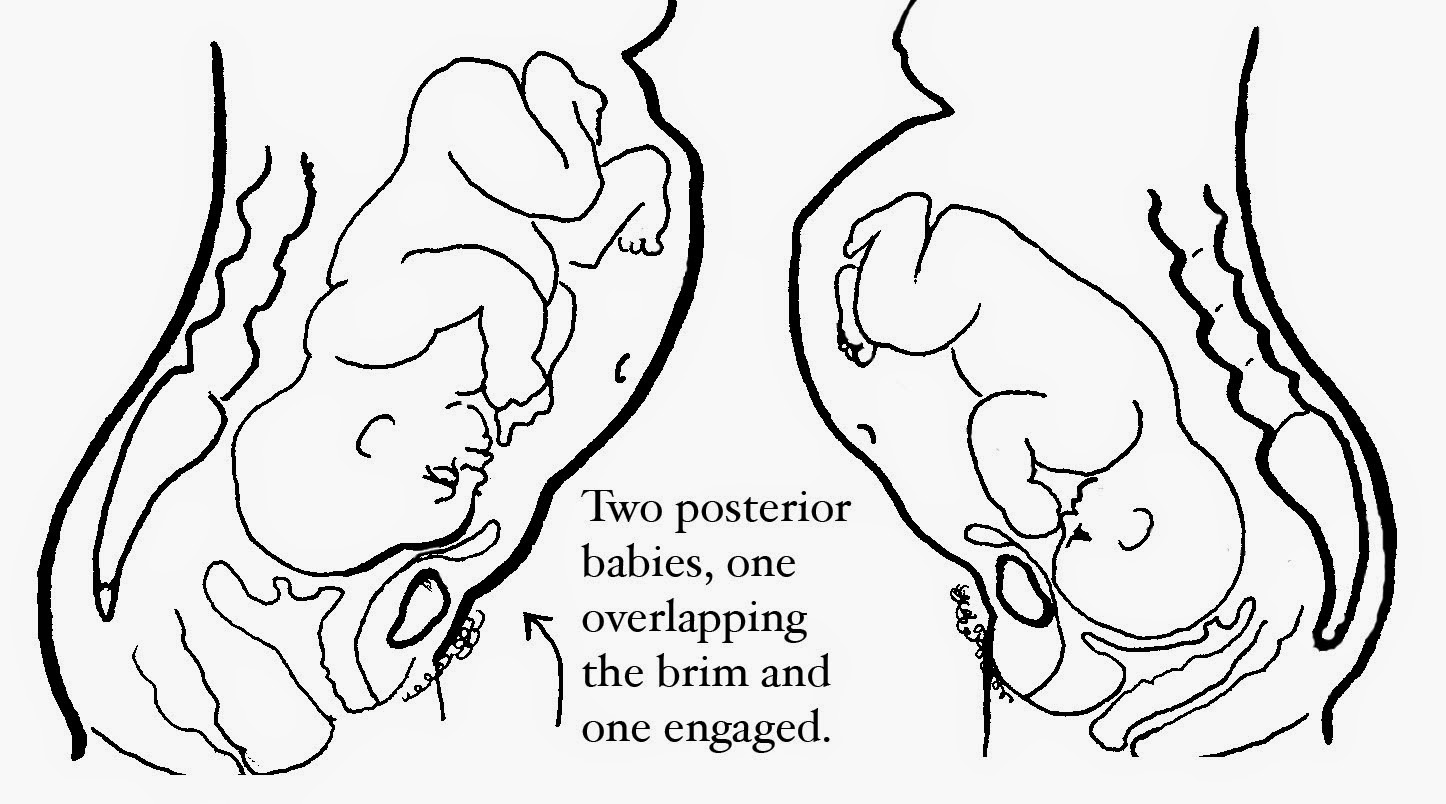Sometimes the posterior baby’s head seems low in the pelvis when checked by vaginal exam. The nurse, doctor, or midwife feels the dome of the head and it doesn’t wiggle. So, they think, the head is not ballottable, and that equals engaged. Therefore, the head is engaged.
But that estimation is wrong when baby is facing the front with her or his forehead on the pelvic brim. If the forehead isn’t in the pelvis we can’t claim engagement.


Pregnant people can tell if the baby is resting on the pubic bone. Midwives can help them determine whether the head is overlapping or not. They may need to have the possibility of an overlapping head pointed out to them. It’s not in the textbooks. It’s only here, at Spinning Babies!
If the mother feels little hands wiggling on either side of her center line (the linea nigra of pregnancy) then she can be pretty sure she has a posterior baby and that any bump on the pubes that is not her is, indeed, her baby’s forehead.
 Compare OP babies
Compare OP babies
Sometimes a woman has a very steep inlet with a pelvic cavity that sweeps back in a 90 degree turn from the inlet. Then a Left Occiput Transverse baby will slightly ride on the pubic bone. The hands will not be felt on the same side as this baby’s back. She will have a little ledge at the top of her sacrum which seems to make the buttocks rounder. They rise higher due to the tilt of the sacrum. This normal variation can make early labor longer. The tip below can help make engaging baby easier. Is the baby in an ideal position and simply waiting to engage?
Remember, most first babies engage by 38-39 weeks. Engagement seems, practically speaking, like it may be easier for baby if the pelvis is aligned. A long walk in flat, soft-soled shoes helps engage babies. Walk regularly in pregnancy.
Uterine contractions seem to want to help baby engage. That’s more important than dilation until engagement occurs. Even if you don’t know baby’s position, doing a series of posterior pelvic tilts with abdominal lifts during ten contractions
is a technique that is likely to help.
D. M. Sherer* and O. Abulafia Intrapartum assessment of fetal head engagement: comparison between transvaginal digital and transabdominal ultrasound determinations Volume 21, Issue 5, pages 430–436, May 2003
[tribe_events_list limit=”4″]